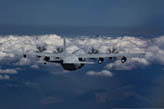Understanding Export Air Freight Rates: A Comprehensive Guide
Export air freight is a vital component of international trade, enabling businesses to transport goods efficiently and cost-effectively. The cost of export air freight rates is influenced by multiple factors, including fuel prices, demand, seasonality, the type of aircraft used, and government policies. Understanding these elements is crucial for businesses aiming to optimize their shipping costs and ensure timely delivery of goods to international markets.
One of the primary factors affecting air freight rates is the cost of fuel. Since airlines operate on fuel-intensive operations, fluctuations in global oil prices significantly impact their operational costs. Additionally, the demand for air transport services plays a critical role. During peak seasons or high-demand periods, air freight rates tend to rise due to increased competition among airlines for routes and cargo.
Seasonality also influences air freight rates. For instance, during holiday seasons or major event years, demand for shipping goods may surge, leading to higher rates. Conversely, during off-peak seasons, rates may decrease as demand drops. The choice of aircraft further affects costs. Smaller planes may have higher fuel efficiency but limited cargo capacity, while larger planes can transport more goods but at a higher cost per unit.
Lastly, government policies and regulations can impact air freight rates. Custom duties, taxes, and import/export tariffs may add to the overall cost of shipping goods internationally. It is essential for businesses to stay informed about these regulations to negotiate better rates and avoid hidden charges.
In conclusion, understanding the factors influencing export air freight rates is essential for businesses to plan their logistics effectively. By considering fuel costs, demand trends, seasonality, aircraft selection, and government policies, companies can make informed decisions to minimize shipping expenses and ensure efficient global trade. Proper planning and negotiation can lead to significant cost savings and improved customer satisfaction.
